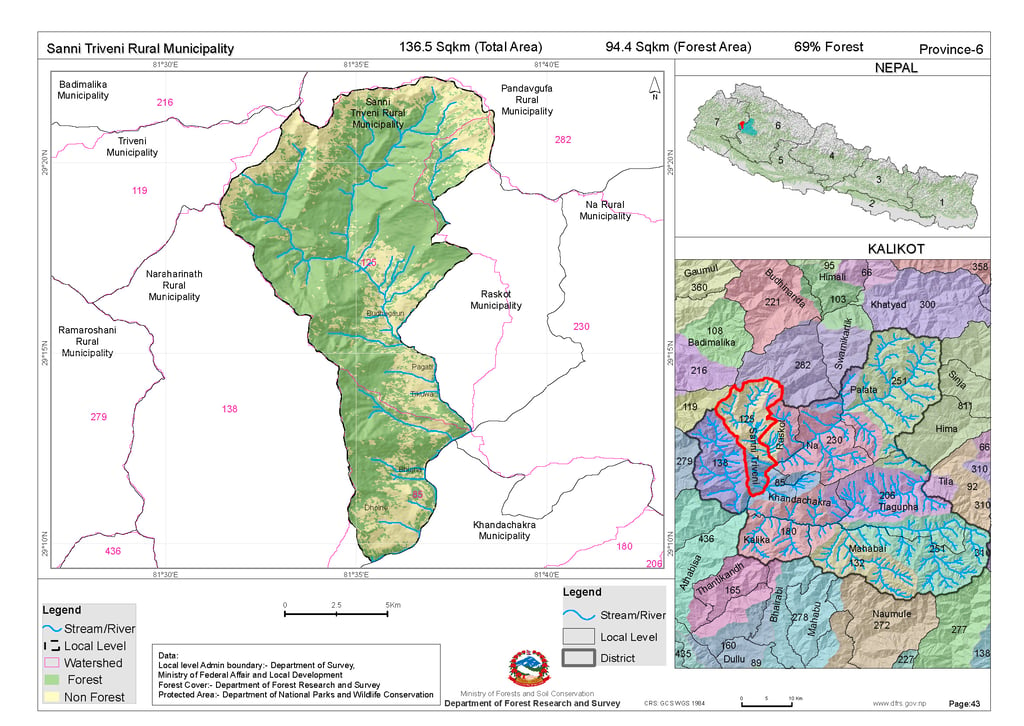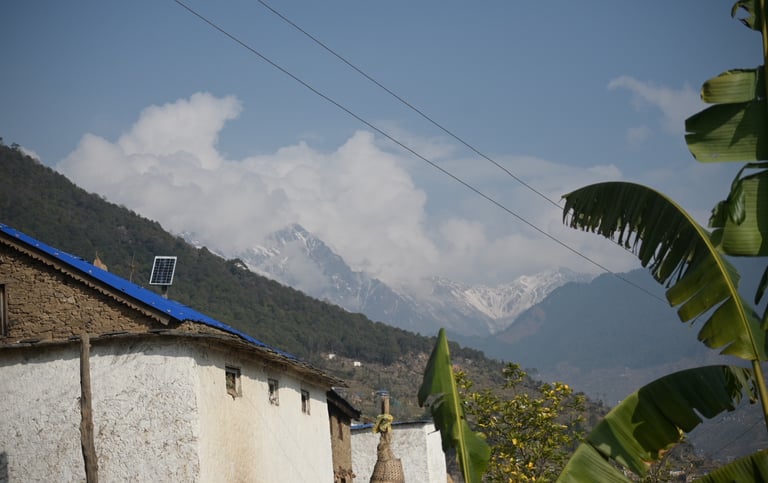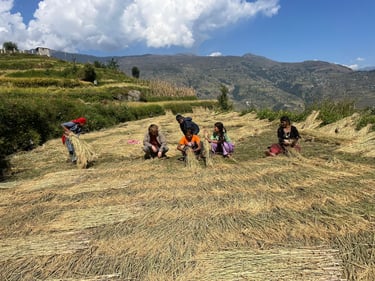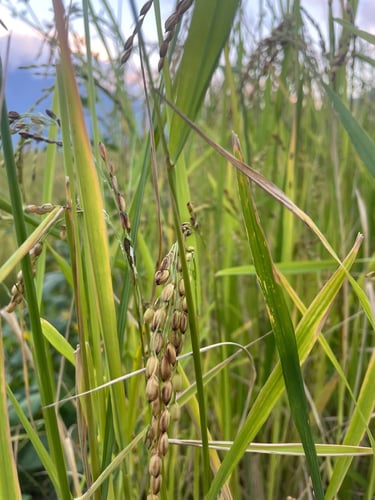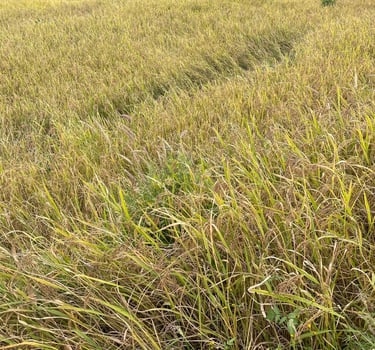Sanni Triveni Rural Municipality
Sanni Triveni Rural Municipality is a natural paradise located within the district of Kalikot*, Nepal. Sanni is 136.71 square kilometers or about 53 square miles; a home to around 13,500 locals. The rural municipality is divided into a total of nine wards, the headquarters of which is situated at Mehalmudi. With the eye-capturing and breathtaking view of green hills, Sanni Triveni has five neighbor municipalities as you can see on the map below.
*Highlighted on map
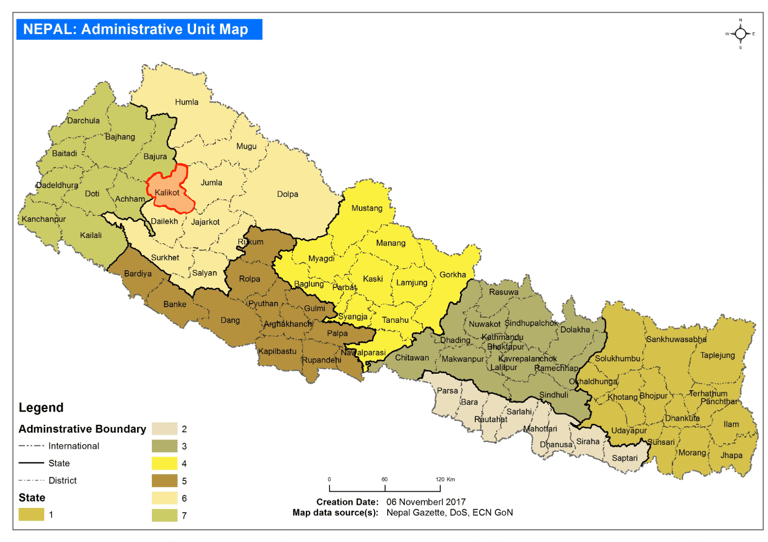

Our village is endowed with rich biodiversity, mesmerizing landscapes, and a unique culture with longstanding traditions. The area is rich in natural resources, but it lacks modern technology and infrastructural development. Animal husbandry, agriculture, and the forest play an important role in sustaining the community. The majority of locals are subsistence farmers, working to feed themselves and their family members. Climate change has made farming more difficult, and also resulted in frequent power and cellular outages. Locals walk long distances with heavy loads, and the roads are in such a dire state that health and transportation services often don’t reach the village. While there are nearby schools, the overall quality of education is low, largely due to a lack of resources in staffing, supplies, and grounds. Although Sanni Triveni is a rural municipality and locals here face increasing problems and difficulties; through systematic, sustainable development, the youth of Sanni Triveni can grow a stronger future.
